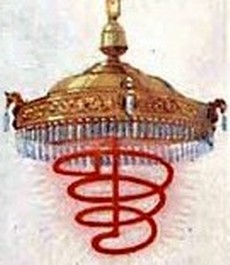Tales of Future Past v2
Main menu
- Home Page
-
Life on Other Worlds
- Life on Other Worlds
- Life on the Planets
- Life on the Moons
- Tales of the Stars
-
Future Living
- Future Living
- Life in 2000 AD
- Leisure
- Shopping
- Drive-In Market
- Cosmetics
- Laundry
- Strikerette
- School: 1999
- Optionics
- Life in 2055
- Future Movies
- Sensorama
- Scopitone
- Radio Pirates
- Weather Control
- Automatic Lumberjack
- Cold Light
- Eternal Youth
- Cryonics
- Suspended Animation
- Space Funeral
- Space Holidays
- Trapped by Television
- Robot Dogs
- Churchill: 1982
- Future House
- Future Kitchen
- Future Food
- Future Work
-
Future City
- Future City
- Skyscraper World
- Tomorrow's Skyline
- Urban Utopias
- World's Fair City
-
Future Transport
- Future Transport
- Rollerball
- Hydrofoil
- Tourism
- Future Liner
- Monorail
- Garden Rail
- Propeller Rail
- Water Rail
- Rocket Trains
- Radio Trains
- Rocket Mail
- Jet Boat
- Desert Liner
- Huge Truck
- Channel Tunnel
- Iron Whale
- Sea Slug
- Sea Slug 2
- Hovercraft
- Ice Field
- Rocket Port
- Vacuum Trains
- Transatlantic Tunnel
- Future Lift
- Travel: 1928
- Concrete Liner
- Teleportation
- Future Car
- Death Rays
Cold Light
Some people are never satisfied. From the moment that Thomas Edison unveiled his incandescent light people were saying, "Nice, Tom, but that thing's too dang hot. Can't you come up with something cooler?" And so began the quest for "cold light."
Actually, people had been playing about with various forms of cold light since Alexandre E. Becquerel investigated fluorescence back in 1857 and one could understand the interest. Electricity was already a new phenomena in everyday life and fears of electrocution didn't need to be augmented by the threat of fire. The prospect of a lighting source that didn't use flame, like gaslights, or get infernally hot, like incandescent or arc lamps, held the promise of safer, more efficient ways of lighting homes and offices.
So, for over eighty years various inventors such as Georges Claude Julius Plücher, Heinrich Geissler, Nikola Tesla, and Peter Cooper Hewitt experimented with various schemes for passing electrical currents through tubes filled with various rarefied gases. This had some success ranging from laboratory curiosities, to mercury vapour lamps that produced way too much light for everyday use to neon tubes that transformed city streets at night into a different world of living lights. But cold light was still elusive and in his novel Ralph 124C41+ Hugo Gernsback put forward as one of his wonders of the 26th century the luminor; a spiral of iridium wire that gave off a brilliant pink-
But cold light was still elusive and in his novel Ralph 124C41+ Hugo Gernsback put forward as one of his wonders of the 26th century the luminor; a spiral of iridium wire that gave off a brilliant pink-
Flourescent lighting ala Ralph 142c41+This cold light of the future turned the streets of a future New York into permanent daytime without a trace of shadow, which must have made people trying to sleep or just finding a quiet corner for a bit of canoodling really happy. It also responded to voice commands, though I can't imagine people going around shouting "lux" at the fixtures all day without them getting horribly self-
At the 1939 world's fair, General Electric unveiled the first practical cold light to the world. Today we called it the florescent tube. It was quite the sensation, though it probably came a second to the artificial lightning that the GE boys were showing off in the pavilion. However, the war got in the way and the public didn't see much of fluorescents outside of factories and railway stations.
But in the late '40s, the manufacturers started to push fluorescents for the home. That, however, didn't prove a very smart move, as I can say from experience. My grandmother had fluorescents in her kitchen. They were the most aggravating fixtures I ever saw; slow to turn on, blinked when they did so, flickered and hummed, and made everything look blue. It made her kitchen even more depressing than her rhubarb pie.
Nowadays, with the new energy efficient fluorescent bulbs that can fit into ordinary incandescent fixtures, there is a lot of buzz about cold lighting. Get it? Buzz? You see, early fluorescent fixtures tended to make a buzzing sound as they got older and... Oh, never mind.